Winter Travel Can Be Brutal!
Although I grew up in Chicago and lived in Ann Arbor, St Louis, and New York, it is easy to lose touch with the reality of temperature extremes that life up north brings.
I live in Miami, in the tropics, where when the weather drops below 70 degrees, the weather reports warn of cold temperatures to come.
No childhood memories could have prepared me for the brutal assault of brittle, subzero temperatures that punched me in the face when I arrived in Chicago January 23.
It was so cold that I wanted to cry- although that was not an option, because my tears would have frozen!
As I drove away from the car rental agency in the midst of a blizzard, I realized my rental car was missing a long handled snow-removal brush. As a result, my first stop, while running errands on the way home, was to an automotive supplies store to purchase this handy tool. (Of note, my very first stop was at a mass retailer that had run out of snow brushes).
The snowy drive home was treacherous at times, as the car swerved into other lanes, and the windshield wipers didn't quite move fast enough to clear my view amidst the large snowflakes. I arrived home safely yet I was apprehensive about leaving the car parked outdoors; I dreaded the prospect of having to remove a night load of snowfall from the car and surrounding area.
Fortunately, the snowfall ceased early evening.
The next morning, one of the night time caregivers stopped by at 730 AM to collect her salary before going to her other job. Shortly after she left, the doorbell rang again. It was her. She informed me she had mistakenly locked her keys inside the car and that she left her car running in order to warm it up in the subzero temperature. (Of note, it is common practice for drivers to go outside and run their engines so that cars can warm up in sub-zero temperatures).
Unfortunately, along with her keys, her purse and all of its contents, and her cell phone, with all of her contact lists were also locked inside the running car. What’s more, she was parked next to a fire hydrant, which carries a $150 parking penalty. Finally, her gasoline tank was almost empty. She feared running the engine would drain the car of all gasoline. It was approximately 10° below zero that morning.
Our first step was to find a way to connect her with information about her roadside emergency assistance program, and to contact her employer to notify them she was running late.
Her house keys were attached to her car keys, so she had to notify a family member she would need their help entering. Because there is only one automobile in her family, I let her drive my rental car home in order to gather her insurance information and her employer’s telephone number. Fortunately, the roadside emergency assistance company came to her rescue in only one hour. This was surprising, given the fact there were a record number of drivers (needing help) who had locked their keys inside of cars they had left running.
The entire backdrop of my January visit consisted of headlines about subzero temperatures.
Every element of what happened during this trip was influenced by the extreme winter weather and its effects. Other examples include:
§ My mom’s Buddhist nurse-who always removes her shoes before entering and leaves them outdoors-bought her shoes indoors.
§ After completing a large grocery shopping run, I forgot two cases of soda on the bottom shelf of the shopping cart in my haste to minimize time spent outside in the cold.
§ My mom was unable to honor in appointment for dental work because the sub zero cold could be harmful to her.
§ I caught another horrible cold. It required antibiotic treatment, which may have been the result of cold germs spread more easily indoors in winter.
§ My skin is still extremely dry, days after returning home from Chicago.
Before I left Chicago, there was news promising the weather would warm up to 35°. The weatherman took pride in sharing the good news. When I arrived home in Miami, the weather forecasters promised we were doomed to another night of a "cold blasts", where temperatures would dip into the mid-50s while we slept.
Everything is relative!
Here is one of my favorite “readings”
Chicago Temperature Conversion Chart
60 above... Floridians wear coats, gloves and woolly hats.
Chicago people sunbathe.
50 above... New Yorkers try to turn on the heat.
Chicago people plant gardens.
40 above... Italian cars won't start.
Chicago people drive with the windows down.
32 above... Distilled water freezes.
Lake Michigan's water gets thicker.
20 above... Californians shiver uncontrollably.
Chicago people have the last cookout before it gets cold.
15 above... New York landlords finally turn up the heat.
Chicago people throw on a sweatshirt.
0 degrees... Californians fly away to Mexico.
Chicago people lick the flagpole and throw on a light jacket over sweatshirt.
20 below... People in Miami cease to exist.
Chicago people get out their winter coats.
40 below... Hollywood disintegrates.
Chicago's Girl Scouts begin selling cookies door to door.
60 below... Polar bears begin to evacuate Antarctica.
Chicago's Boy Scouts postpone "Winter Survival" classes until it gets cold enough.
80 below... Mt. St. Helen's freezes.
Chicago people rent some videos.
100 below... Santa Claus abandons the North Pole.
Chicago people get frustrated when they can't thaw the keg.
297 below... Microbial life survives on dairy products.
Illinois cows complain of farmers with cold hands.
460 below... ALL atomic motion stops.
Chicago people start saying...."Cold 'nuff for ya?"
500 below... Hell freezes over.
The Chicago Cubs win the World Series
Thursday, January 31, 2008
Friday, January 25, 2008
Treating Multiples Illnesses is Difficult
Since I arrived in Chicago, I notice Mom appears to have deteriorated dramatically since she was released from the hospital.
She is weak.
She falls into deep, uninterruptible sleep.
She has no appetite.
Her motor skills have deteriorated: her legs are weak and she will not feed herself.
She is connected to an oxygen machine. Her oxygen level was only 80% today.
She gets disoriented at times.
She had diarrhea for the first time in ages.
Her toothache is worse than ever. Because she has a pulmonary embolism and is taking a blood thinner, she cannot receive oral surgery. It is too painful for her to brush her teeth. The nurse, who came today, recommends managing the tooth pain with Tylenol extra strength.
She is so sad and tired
Just last month, she was walking with the physical therapist, had a healthy appetite, and smiled engagingly.
It is very sad!
She is weak.
She falls into deep, uninterruptible sleep.
She has no appetite.
Her motor skills have deteriorated: her legs are weak and she will not feed herself.
She is connected to an oxygen machine. Her oxygen level was only 80% today.
She gets disoriented at times.
She had diarrhea for the first time in ages.
Her toothache is worse than ever. Because she has a pulmonary embolism and is taking a blood thinner, she cannot receive oral surgery. It is too painful for her to brush her teeth. The nurse, who came today, recommends managing the tooth pain with Tylenol extra strength.
She is so sad and tired
Just last month, she was walking with the physical therapist, had a healthy appetite, and smiled engagingly.
It is very sad!
Saturday, January 19, 2008
Mom is on Oxygen Treatment At Home
When my Mom was sent home from the hospital this week, her cardiologist doctor prescribed oxygen therapy at home.
I just Googled “oxygen, medical, in home” and received more than ½ million hits—many of which are medical supply distributors.
Here is an excerpt from one supplier:
Why do some people need extra oxygen?
When the body cells do not get enough oxygen, a condition called hypoxia results. Hypoxia can cause shortness of breath and make the heart beat faster and have an irregular rhythm, causing restlessness and confusion.
What causes shortness of breath?
Here are some situations that may cause people to experience a shortage of oxygen:
--The lungs may not be providing enough oxygen to the blood
--The heart may not be pumping the correct amount of oxygen
--The blood may not be carrying enough oxygen to the cells
Your doctor's prescription
If you have hypoxia, your doctor may prescribe oxygen. Like other medications, it is important that you use oxygen exactly as it is prescribed. An exact flow rate, in liters per minute, is prescribed to increase the supply of oxygen to your body cells to the proper level. This flow rate must never vary from the amount your doctor prescribes. Too much oxygen can be just as harmful as too little.In addition to an exact flow rate, your doctor will specify the length of time that you should use oxygen each day. Never vary from these instructions without first consulting your physician.
Safety precautions
Oxygen does not explode and it does not burn, but an atmosphere enriched with oxygen will make a fire burn faster and hotter. To avoid the chance of fire and other possible hazards associated with oxygen, here are some basic tips.
--DO NOT place oxygen containers near radiators, heat ducts, stoves or any other sources of heat.
--DO NOT oil or grease oxygen equipment.
--DO NOT leave oxygen turned on when not in use.
I just Googled “oxygen, medical, in home” and received more than ½ million hits—many of which are medical supply distributors.
Here is an excerpt from one supplier:
Why do some people need extra oxygen?
When the body cells do not get enough oxygen, a condition called hypoxia results. Hypoxia can cause shortness of breath and make the heart beat faster and have an irregular rhythm, causing restlessness and confusion.
What causes shortness of breath?
Here are some situations that may cause people to experience a shortage of oxygen:
--The lungs may not be providing enough oxygen to the blood
--The heart may not be pumping the correct amount of oxygen
--The blood may not be carrying enough oxygen to the cells
Your doctor's prescription
If you have hypoxia, your doctor may prescribe oxygen. Like other medications, it is important that you use oxygen exactly as it is prescribed. An exact flow rate, in liters per minute, is prescribed to increase the supply of oxygen to your body cells to the proper level. This flow rate must never vary from the amount your doctor prescribes. Too much oxygen can be just as harmful as too little.In addition to an exact flow rate, your doctor will specify the length of time that you should use oxygen each day. Never vary from these instructions without first consulting your physician.
Safety precautions
Oxygen does not explode and it does not burn, but an atmosphere enriched with oxygen will make a fire burn faster and hotter. To avoid the chance of fire and other possible hazards associated with oxygen, here are some basic tips.
--DO NOT place oxygen containers near radiators, heat ducts, stoves or any other sources of heat.
--DO NOT oil or grease oxygen equipment.
--DO NOT leave oxygen turned on when not in use.
Saturday, January 5, 2008
Who is at Risk for Stroke?
Who is at Risk for Stroke?
It is a myth that stroke occurs only in older adults. A person of any age can have a stroke. But, stroke risk does increase with age. For every 10 years after the age of 55, the risk of stroke doubles, and two-thirds of all strokes occur in people over 65 years old. Stroke also seems to run in some families. Stroke risk doubles if someone in the immediate family (mom, dad, sister or brother) has had a stroke. Adults who smoke or who have high blood pressure, atrial fibrillation (a kind of irregular heart beat), heart disease or diabetes are more likely to have a stroke. Hormonal changes with pregnancy, childbirth, and menopause are also linked to an increased risk of stroke.
Source: U.S. Department of Health and Human Services Posted: Jan. 1, 2008
It is a myth that stroke occurs only in older adults. A person of any age can have a stroke. But, stroke risk does increase with age. For every 10 years after the age of 55, the risk of stroke doubles, and two-thirds of all strokes occur in people over 65 years old. Stroke also seems to run in some families. Stroke risk doubles if someone in the immediate family (mom, dad, sister or brother) has had a stroke. Adults who smoke or who have high blood pressure, atrial fibrillation (a kind of irregular heart beat), heart disease or diabetes are more likely to have a stroke. Hormonal changes with pregnancy, childbirth, and menopause are also linked to an increased risk of stroke.
Source: U.S. Department of Health and Human Services Posted: Jan. 1, 2008
I Just Received an Emergency Phone Call
It's 12:45AM and I am on pins and needles. The paramedics were called because my Mom complained of chest pains. I am waiting for news from the ER doctors.
update: The nightime caregiver will go back to the hospital this morning on off-duty time. The weekend caregiver is preparing Dad's breakfast at home.
update 2: Mom remained in the hospital on a blood thinner and round-the-clock oyygen treatment for ten days. I was in constant contact with her cardiologist and all three shifts of hospital nurses. They moved her from critical care to a regular unit after 5 days.
update: The nightime caregiver will go back to the hospital this morning on off-duty time. The weekend caregiver is preparing Dad's breakfast at home.
update 2: Mom remained in the hospital on a blood thinner and round-the-clock oyygen treatment for ten days. I was in constant contact with her cardiologist and all three shifts of hospital nurses. They moved her from critical care to a regular unit after 5 days.
Subscribe to:
Posts (Atom)
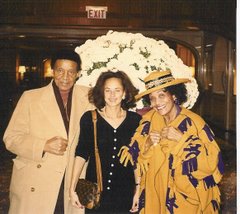
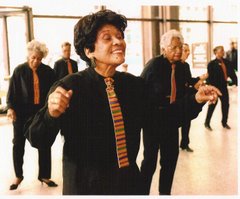
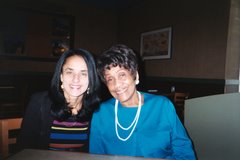

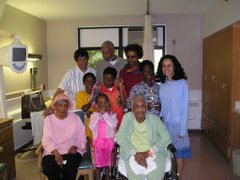

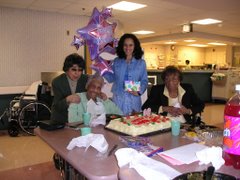
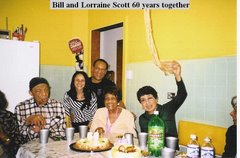

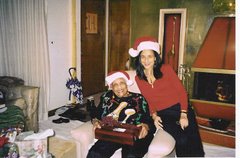
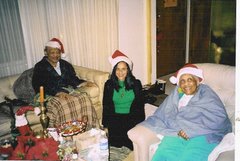
.jpg)